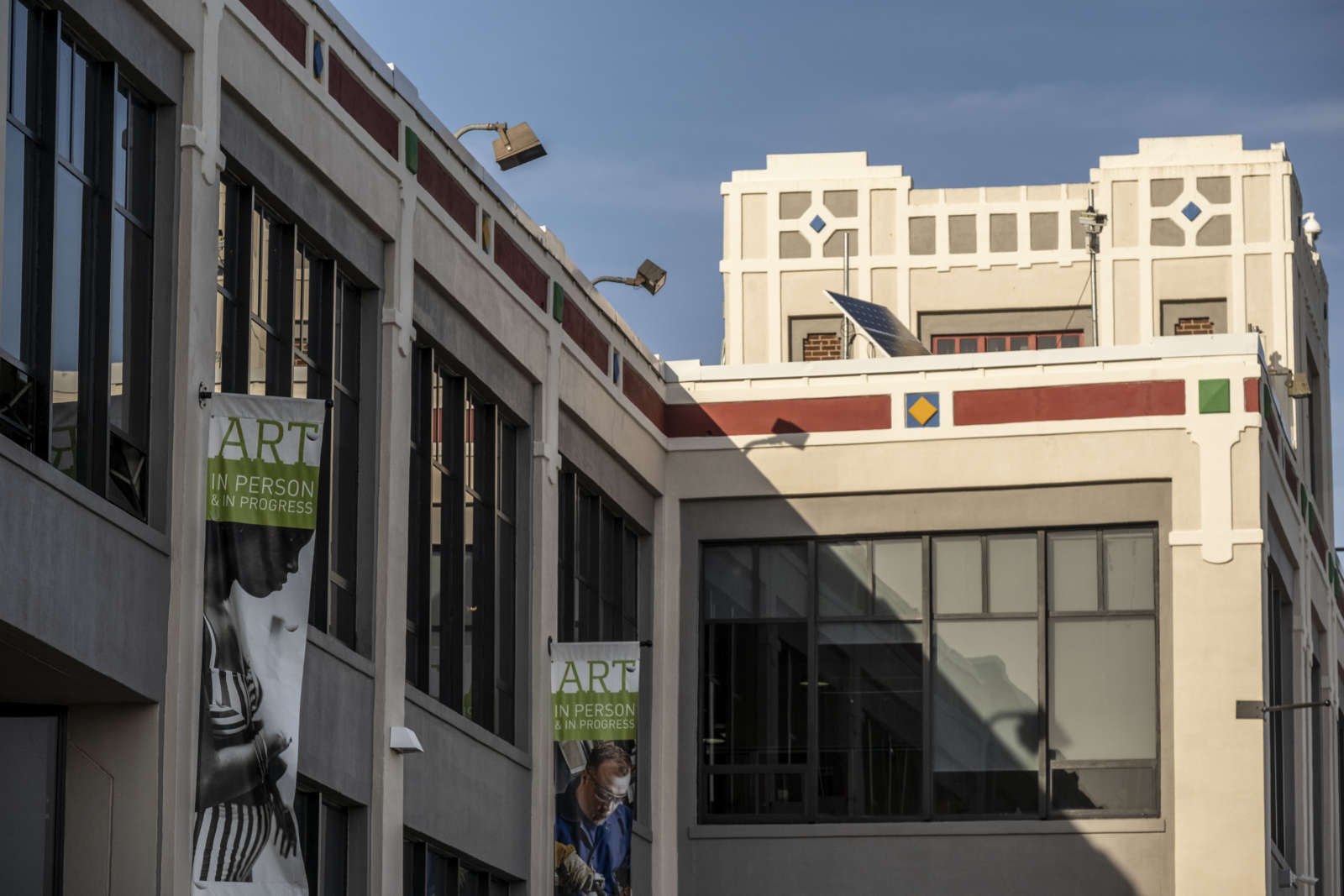
This weekend marks the 105th anniversary of the Alexandria Torpedo Factory’s ironic origins.
As told in the Office of Historic Alexandria’s This Week in Historic Alexandria newsletter, the contract for constructing the U.S. Naval Torpedo Station was awarded on Oct. 14, 1918. The United States was embroiled in the First World War, but work on the building wouldn’t begin until the day after the war ended.
“Ironically, work on the building began on November 12, 1918, the day after Armistice Day, which marked the official end of World War I,” the Office of Historic Alexandria wrote. “The first torpedo was produced there in November 1920. Once fully operational, the Torpedo Station was responsible for the manufacture and maintenance of torpedoes for the next five years.”
Five years after it started operations, the factory temporarily stopped producing torpedos and became a storage facility until WWII, when production resumed at an intense rate. The Torpedo Factory website said the complex grew to 16 buildings and 5,000 employees, who were notably not segregated, which the website said was uncommon in Virginia at the time.
After the war, the Torpedo Factory briefly manufactured parts for rocket engines before shutting down permanently in 1946. In the 1950s it was used as the Federal Records Center and stored various items, from dinosaur bones to the Nuremberg War Crimes trial records — Alexandria gets a special shoutout at the start of William L. Shirer’s The Rise and Fall of the Third Reich.
In 1974, the Alexandria City Council passed a three-year pilot to allow The Art League to set up inside the neglected building. The interior was power-washed, 40 dump trucks of debris were removed, and the Torpedo Factory Art center was born.

The City of Alexandria is working on renaming streets honoring Confederate leaders, and now there’s a full list of new potential names to replace them.
The Historic Alexandria Resources Commission compiled a list of roughly 63 names that could replace streets honoring Confederates.
Each item on the list includes a brief biography or information about the names. Some potential street names honor individuals, others honor groups of people — like Native American tribes or a group of suffragists called the Silent Sentinels. Some names represent ideas or local icons, like “Titans” in honor of the Alexandria City High School mascot and “Restoration” to represent that Alexandria was the Restored Capital of Virginia from 1863-1865.
Some of the goals set for the list included focusing on underrepresented people in Alexandria street names, such as women or minorities, and to avoid naming streets after anyone currently living.
Some of those on the list were recently deceased, including:
- Chet Avery: A blind man who advocated for people with disabilities. Avery was an Alexandria Living Legend and died in 2022
- Senator John McCain: An Alexandria resident, American politician, Presidential candidate and former prisoner of war. He died in 2018.
- Kerry Donley: a former Alexandria Mayor from 1996-2003 and Democratic Party of Virginia Chairman from 2003-2005, who died in 2022.
- Bernard Cohen: the lawyer in the Loving vs. Virginia case, who also represented Alexandria in the Virginia State Legislature. Cohen died in 2020.
- Lillie Finklea: helped establish the Friends of the Freedmen’s Cemetery in 1997 and helped lead research, public speeches and remembrances to support the cemetery. She died in 2022.
- Gary Oelze: Founder of the Birchmere Music Hall, died in 2023.
- Willard Scott: A weather forecaster on the Today Show and the creator/original performer of the Ronald McDonald mascot. He died in 2021.
- Patsy Ticer: The first woman elected Alexandria mayor in 1991. She died in 2017.
- Dorothy Evans Turner: A community organizer and activist who died in 2016.
- Frankie Welch: An Alexandria business owner and designer who designed signature scarves for four First Ladies. She died in 2021.
Several of those on the list were enslaved, including:
- Ona Judge: Escaped enslavement by the Washington family in 1796 and eluded the Washington family’s efforts to recapture her.
- Betsey Dogan: Enslaved at birth but gained her freedom before the Civil War. She and her son owned businesses and residences in an area of the city once known as Fishtown.
- Frederick Douglass: Escaped slavery and became one of the nation’s most famous social reformers and orators.
- Mary Edmonson and Emily Edmonson: enslaved sisters jailed in Alexandria and later engaged in anti-slavery activism after their freedom.
- George W. Ford: A U.S. military officer in the Spanish-American War born into slavery at the Mount Vernon plantation.
- David Jabour: Born enslaved, but purchased his freedom and worked as a potter on Wilkes Street with at least fifteen other free Black artisans.
- Harriet Jacobs: Abolitionists who established the first free school for Black children in Alexandria in 1864.
- Hercules Posey: The enslaved chief cook at Mount Vernon. Posey escaped enslavement on 1797 and fled to New York City.
The recommendations are set to go to the City Council sometime in November for review.
Photo via John McCain/Facebook
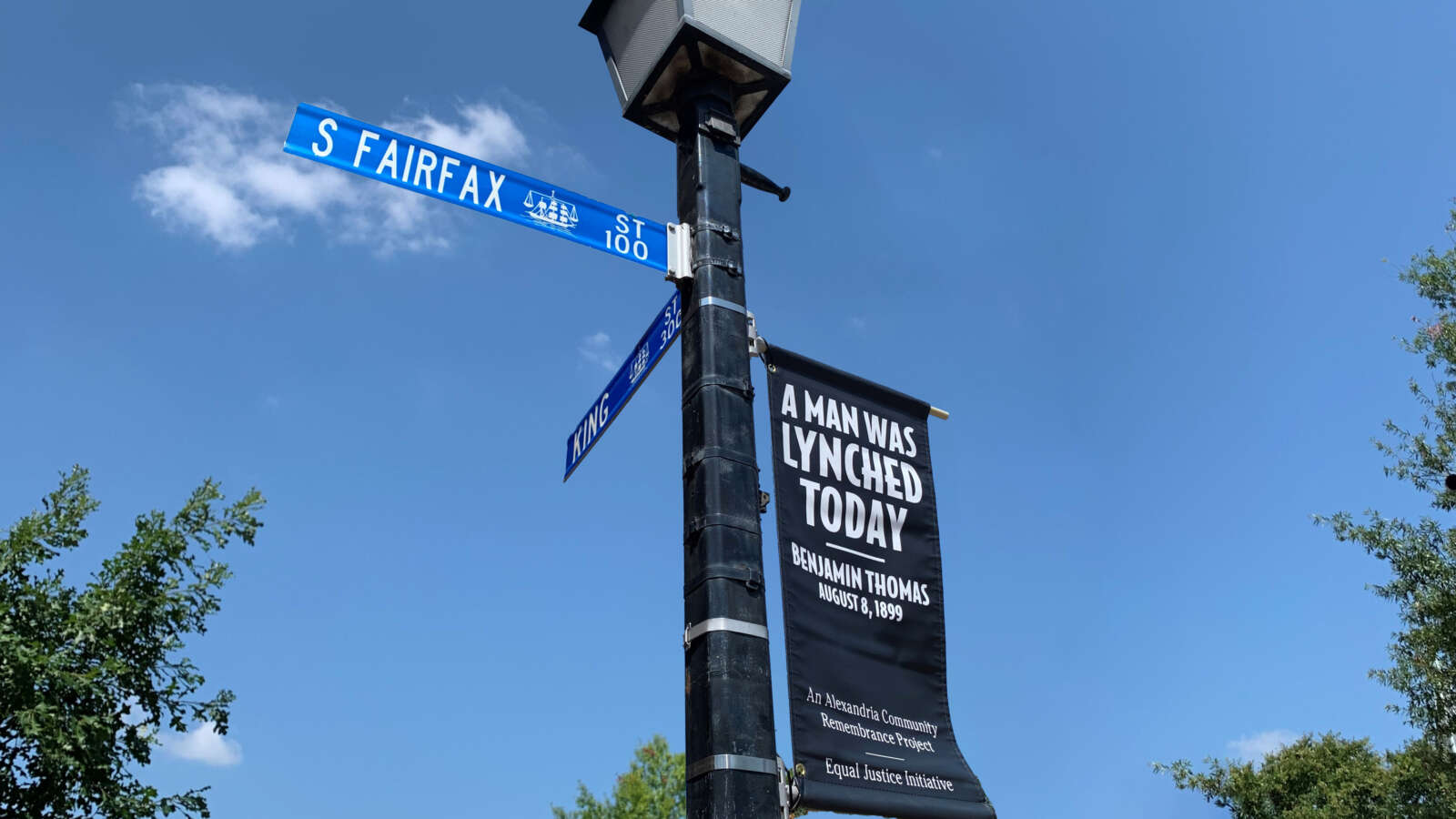
A set of dinners next month will help raise funding for local scholarships named after the victims of lynching in Alexandria.
The Alexandria Community Remembrance Project runs the scholarships in the names of Joseph McCoy and Benjamin Thomas, Black Alexandrians who were lynched in 1897 and 1899.
“The dinners, hosted in the homes of members of ACRP, provide attendees with an opportunity to meet other Alexandrians who care about racial justice issues,” the Office of Historic Alexandria said in a newsletter. “Each dinner is based on a book that attendees agree to read ahead of time and discuss at the meal.”
Tickets for the fundraisers are $125 per person. The dinners are scheduled for Saturday, Nov. 4 and the following Saturday, Nov. 11.
The discussions will center around Ijeoma Oluo’s So You Want to Talk About Race, Grace Elizabeth Hale’s Making Whiteness: The Culture of Segregation in the South, and Loki Mulholland’s Get Back to the Counter, Seven Lessons From Civil Rights Icon Joan Trumpauer Mulholland.
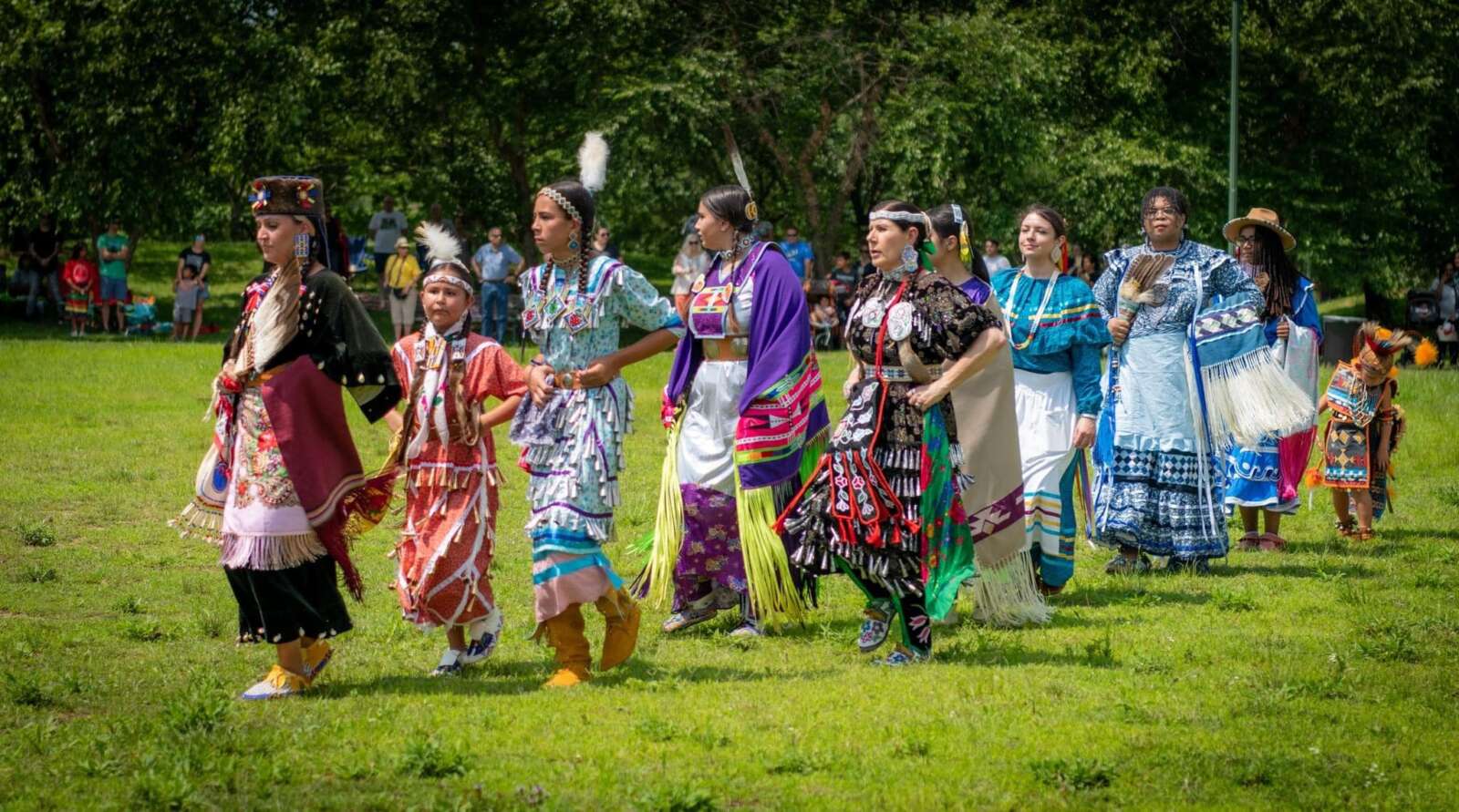
It’s Indigenous Peoples’ Day, a day honoring and celebrating Native American history and culture, and in Alexandria, there are several closures or changes to services.
Alexandria’s DASH bus network is operating on a Saturday schedule today. The King Street Trolley is running from the King Street Metro station to City Hall every 15 minutes from 11 a.m.-11 p.m.
Alexandria’s recreation centers are closed except the Charles Houston and Patrick Henry rec centers, which are open from 9 a.m.-3 p.m.
October 9, 2023 (Monday) – Indigenous Peoples' Day Hours of Operation
Charles Houston and Patrick Henry: 9 a.m. – 3 p.m.
All Other Facilities: Closed pic.twitter.com/3y05n2n6vE— RPCA, Alexandria VA (@RPCA_AlexVA) October 9, 2023
All of Alexandria’s libraries are also closed today.
All Alexandria Library branches are closed today in observance of Indigenous Peoples' Day. https://t.co/NdSe97f3f9 pic.twitter.com/94hKgCS6wT
— Alexandria Library (@alexlibraryva) October 9, 2023
The courts, DMV, impound lot and schools are all closed today, except for Samuel W. Tucker Elementary School.
The Torpedo Factory Art Center is open from 10 a.m.-6 p.m. today.
The Freedom House Museum, Gadsby’s Tavern Museum and Stabler–Leadbeater Apothecary Museum will be open from 1-5 p.m., but all other City museums are closed.
Parking enforcement is suspended today at metered spaces, residential permit parking districts, and other areas with time limits.
“This suspension of enforcement applies only to the restrictions at legal parking spaces and does not permit parking in any location normally prohibited (for example, no-parking zones, loading zones, or spaces for persons with disabilities),” the city said in a release.
For those hoping to use the day to learn a little more about Native American history in Alexandria, the City’s website covers the history of indigenous peoples in the city.
“Despite the past 250 years of construction and development, remnants of the Native American past still remain buried within the city,” the city’s website says. “To date, archaeologists have identified more than 30 sites containing Indian artifacts and features and have registered them with the Virginia Department of Historic Resources. The types of artifacts discovered in Alexandria indicate that Indians visited the area beginning about 13,000 years ago.”
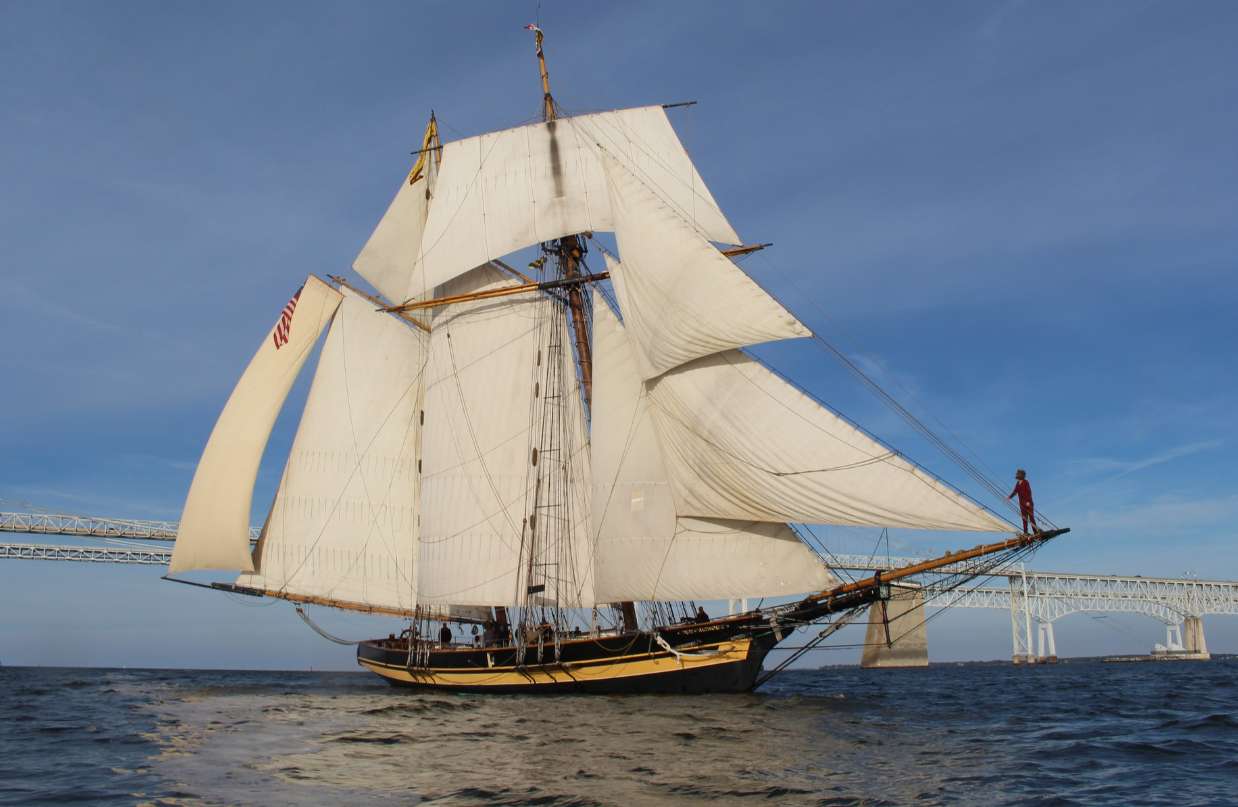
Patrick O’Brian enthusiasts rejoice: another Age of Sail replica ship is coming to Alexandria.
The schooner Pride of Baltimore II, a replica of the 1812 ship Pride of Baltimore, will be docking at Alexandria’s marina later this month.
The ship will be in Alexandria for a three-day visit from Friday, Oct. 20, to Sunday, Oct. 22. During that time, free deck tours will be available from 10 a.m.-3 p.m.
“Tickets are not required for the free deck tours,” the release from the City of Alexandria said, “and will include a chance to talk with deck crew and a National Park Service (NPS) ranger to learn more about the War of 1812, Thomas Boyle, privateers, and the Star-Spangled Banner National Historic Trail.”
The Pride of Baltimore II was “hoisted aloft and launched from her Inner Harbor birthplace on April 30, 1988,” the release said. Since then, the schooner has sailed 275,000 nautical miles and visited 200 ports in 40 countries, the release said.
Image via Pride of Baltimore II/Facebook
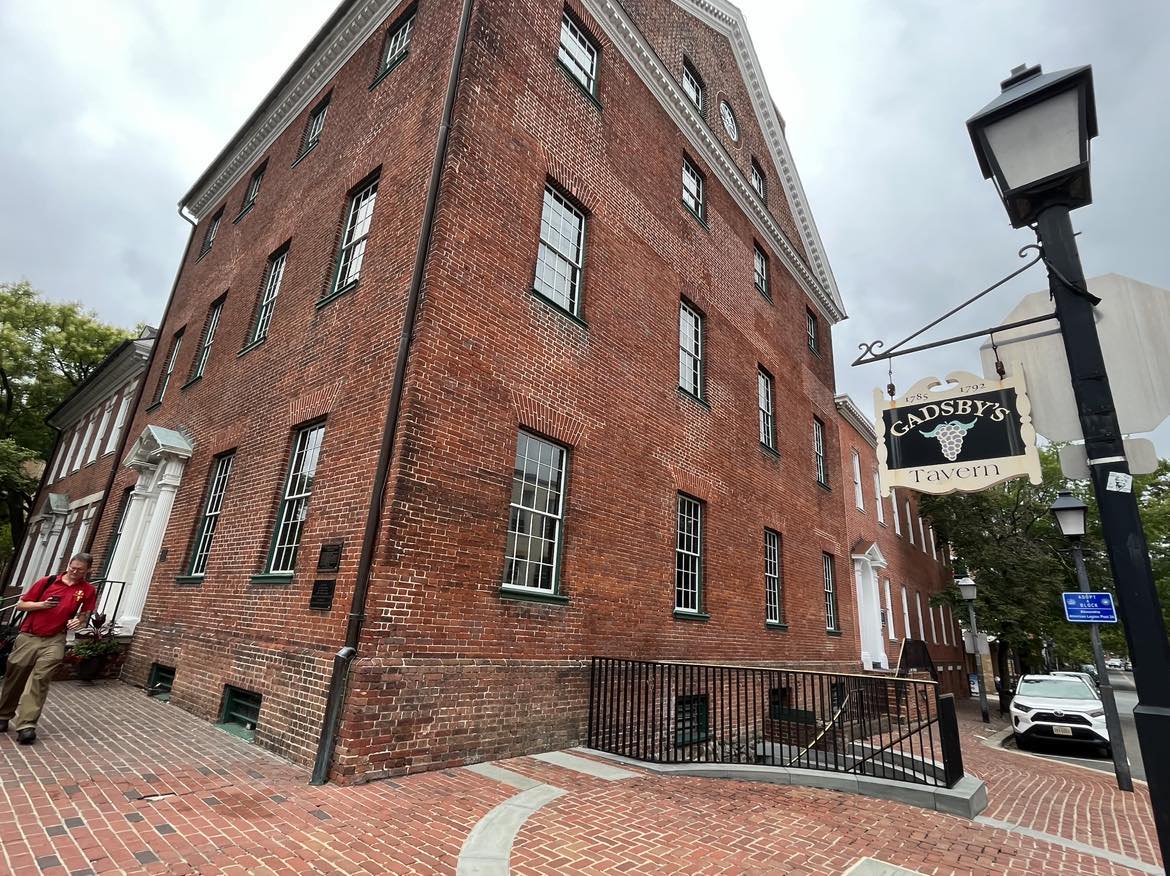
Alexandria is pretty indisputably the champion of Halloween in the region, and every year, the city’s museums get in on the action.
Two museums around Alexandria are offering special tours in October exploring poisons and death in the City of Alexandria.
Gadsby’s Tavern Museum (134 N. Royal Street) has Death at the City Hotel, an event that uses the death of actress Anne Warren at the hotel in 1808 to explore how Alexandrians at the time would have viewed death and grieving.
The event is scheduled for Friday, Oct. 13 and Saturday, Oct. 14, from 7-9 p.m. Tickets are $45 per person or $30 for volunteers/Office of historic Alexandria members.
According to the Office of Historic Alexandria’s This Week in Historic Alexandria newsletter:
As is per custom, portrayal of grief can include black clothing, armbands, and jewelry, which can include the hair of our deceased friend. Join us in 1808 and learn about the unwritten social guidelines of mourning periods and the “proper attire” wealthy, free Alexandrians would have adhered to and how others would have their expressions of grief suppressed by social and economic status and, even written law. As we explore these topics guests will sip delicious spirits (two drink tickets included) and create their own individualized, wearable mourning pendant (or magnet) using designs inspired by popular death iconography of the time period. 21 and older only.
Meanwhile, the Stabler-Leadbeater Apothecary Museum (105-107 S. Fairfax Street) is hosting its Poisons at the Apothecary Museum. The tour runs Saturdays, Oct. 14, Oct. 21 and Oct. 28 from 5:30-6:30 p.m. Tickets are $15.
According to the newsletter:
Come explore the sinister side of medicine on the Apothecary Museum’s Poisons Tour. This one-hour tour explores several different types of poisons, their historic uses at the Apothecary, and what we know today. Recommended for ages 18 and older.
Lastly, tickets are on sale for an acclaimed Edgar Allan Poe reading returning to the Lyceum on Oct. 30 and Oct. 31.
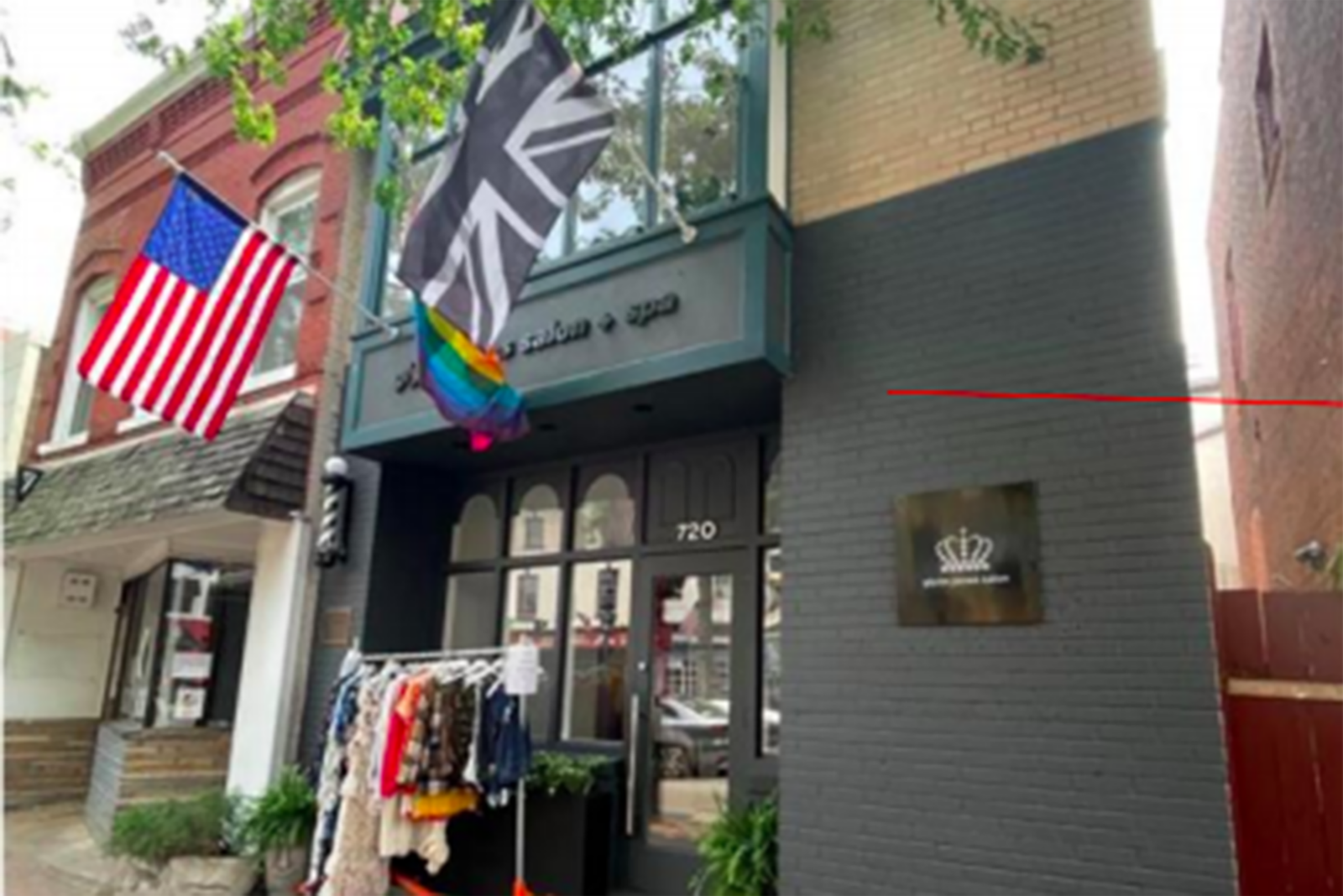
Alexandria planning staff are recommending that City Council reverse a ruling by the Board of Architectural Review and allow a hair salon to keep an after-the-fact paint job on its exterior.
In May, the city was notified that the Glynn Jones Salon at 720 King Street painted a large portion of its exterior the color gray. On July 6, the Board of Architectural Review unanimously voted to deny the salon a certificate of appropriateness for the work.
While the salon is located in the Old Town Historic District, city staff do not believe the work has any adverse effect on the previously unpainted masonry.
“The Board found that painting the building’s yellow brick was not appropriate since yellow brick buildings are rare in Alexandria and the material can be considered a character defining,” city staff reported. “(S)taff does not believe that the after-the-fact work of partially painting previously unpainted masonry has an adverse effect on the building at 720 King Street, nor does it diminish the historic character of the historic district.”
Anthony Hughes is representing the salon, and said in the appeal that the facade of the building was constructed in the 1960s and is not historic.
“The brick used in the construction is not historically significant, as it is not part of the original structure,” Hughes said. “Therefore, any alterations to the exterior, including painting, should be evaluated based on the existing planning guidelines and not restricted by the historical context of the area, but on a case-by-case basis.”
According to the city:
The building at 720 King Street was built between 1891 and 1896. However, the Sanborn Fire Insurance Maps show constant alterations and additions throughout the decades. The Sanborn Map of 1931 shows for the first time that the main building (front portion) was entirely made of brick. Therefore, the main building is considered an Early building (built before 1932) within the Old and Historic Alexandria District (Figure 2). However, the building underwent major renovations in 1967 (Permit # 24731) when the front/ north elevation was completely rebuilt, thus the front portion of the building is considered Late (built after 1931).
The Zoning Ordinance specifically prohibits painting previously unpainted masonry surfaces without BAR approval. However, the BAR does not regulate colors once buildings are already painted. The chosen color gray applied on the building’s storefront (without BAR approval) is subtle and does not subtract from or diminish the character of the building and/or the adjacent existing structures. Furthermore, the color gray has been historically appropriate to both Early and Late buildings within the historic districts.
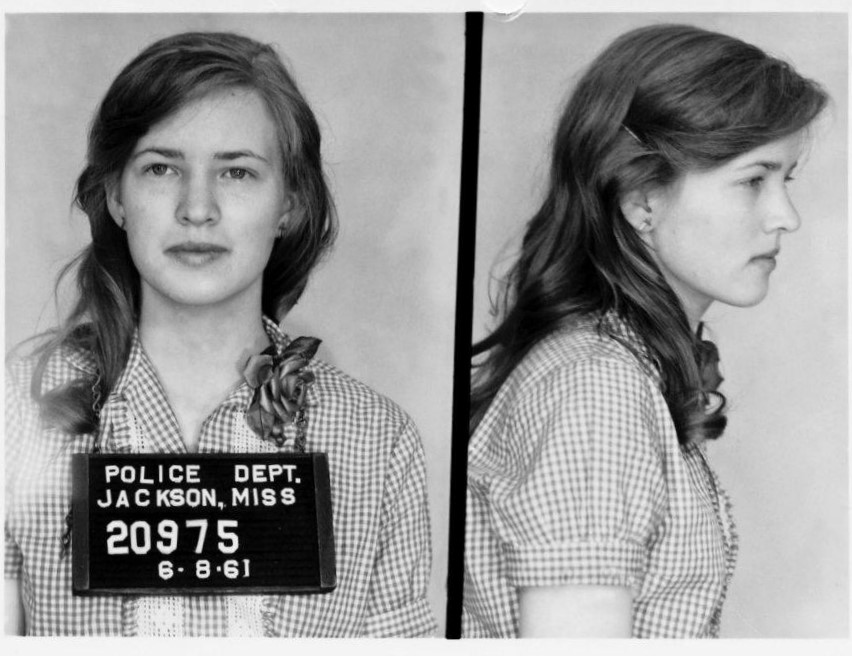
Freedom Rider Joan Trumpauer Mulholland, who was imprisoned in Mississippi for her civil rights activism, is scheduled to speak at a meeting of the Alexandria Community Remembrance Project later this month.
The Office of Historic Alexandria said Mulholland will speak at the free event at 1 p.m. in The Lyceum (201 S Washington Street) on Saturday, Sept. 23.
Mulholland participated in several civil rights events and will be available for a Q&A at the event, along with a book signing.
According to the OHA’s newsletter:
Freedom Rider Joan Trumpauer Mulholland, who also played a role in integrating Glen Echo Park, will speak to the Alexandria Community Remembrance Project for the Fall Meeting. The event is free and begins with a social at 1 p.m., with program to follow at 1:30 p.m. During the struggle for civil rights, Northern Virginian Trumpauer-Mulholland participated in more than 50 sit-ins and demonstrations including the Freedom Rides, the Jackson Woolworth’s Sit-in, the March on Washington, the Meredith March, and the march from Selma to Montgomery. Mulholland will be joined by her son and documentarian Loki Mulholland for the presentation, followed by time for questions and a book signing. Her most recent book, “Get Back to the Counter,” as well as some children’s books about nonviolent protests will be available for purchase.
The Alexandria Community Remembrance Project is an initiative that provides education on the history of civil rights and hate crimes, like the city’s two fatal lynchings.
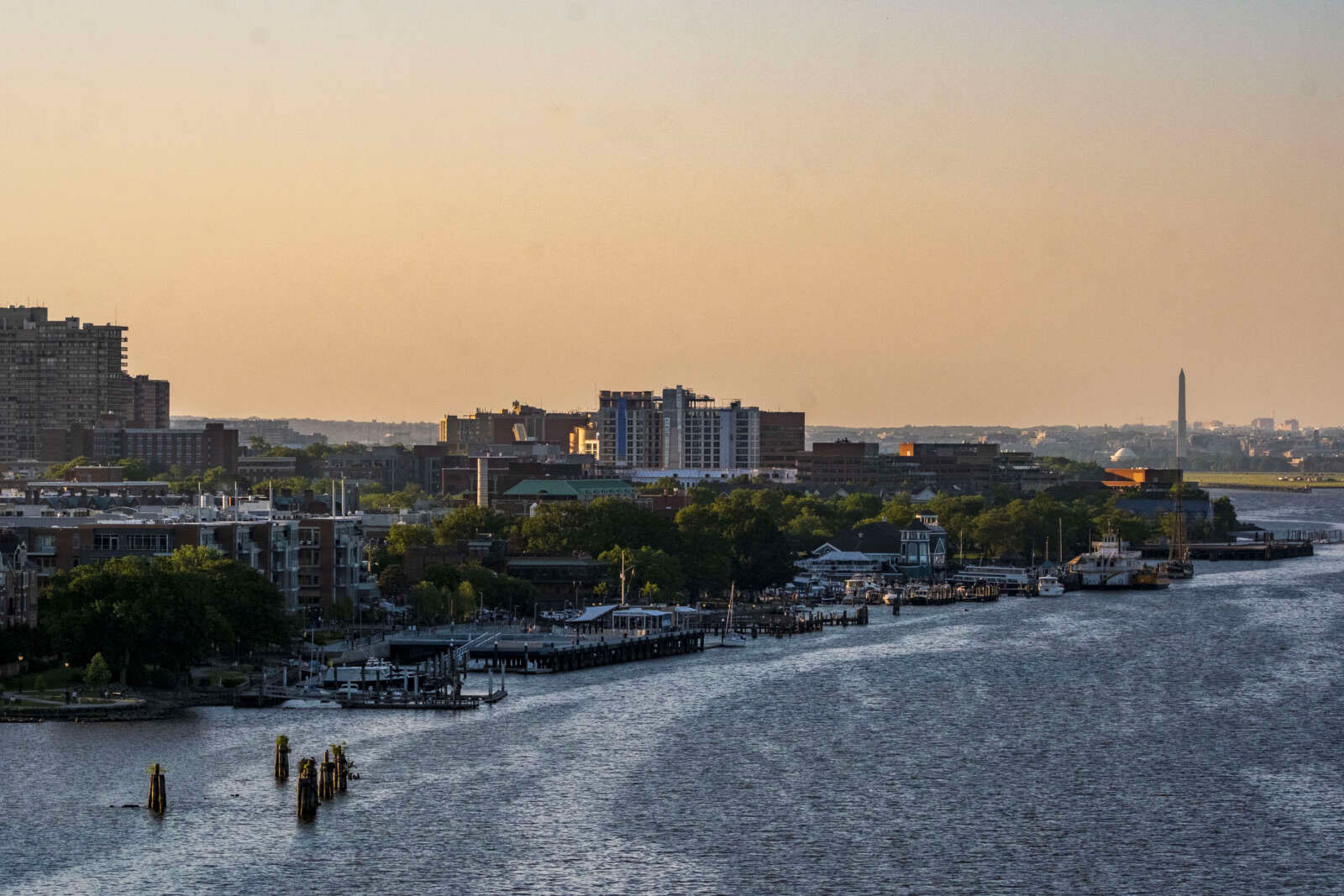
Alexandria’s waterfront turns 293 this year and, may we just say, it doesn’t look a day over 200.
A symposium called The Alexandria Forum is returning next month to look back those nearly 300 years of history at the edge of the Potomac River. This year’s theme is The Waterfront Revisited: Birth and Rebirth, 1730-2023.
While Alexandria’s coastline as it exists today wouldn’t be built until a few years later, tobacco warehouses built in 1730 near the river’s edge turned Alexandria into a flourishing port.
The city was officially founded as a city in 1749, two years before Georgetown, and in the 1780s, the city began a massive project to replace the cliffs along the water’s edge with several more city blocks, creating the coastline as it exists today.
The Alexandria Forum will dive into this history, with new information from excavations and more.
According to the release:
The Alexandria Forum is returning! On October 20th, the Office of Historic Alexandria will host this day-long conference, launching with the theme – The Waterfront Revisited: Birth and Rebirth, 1730-2023. The program will be held at the Alexandria History Museum at The Lyceum and explore the theme of revealing the history of the Alexandria Waterfront through new research lenses, technologies, excavations, and sources.
Presentations will weave together the many strands of historical evidence currently under examination, from deeds to store ledgers, from manifests to material culture, and provide new insights. The event’s keynote speaker is Dr. Abby Schreiber, sharing her recent research on a comprehensive documentary study of the waterfront. Event speakers also include Molly Kerr, Audrey Davis, African American Heritage Trail Committee Members with Committee Chair Dr. Krystyn Moon, Blake Wilson, Dr. Garrett Fesler, Dr. Ben Skolnik, and Dr. Tatiana Niculescu.
The symposium is scheduled for Friday, Oct. 20, from 9 a.m.-4 p.m. at the Alexandria History Museum at the Lyceum (201 S Washington Street). Tickets are $60 per person, or $40 for Office of Historic Alexandria members, volunteers and students.
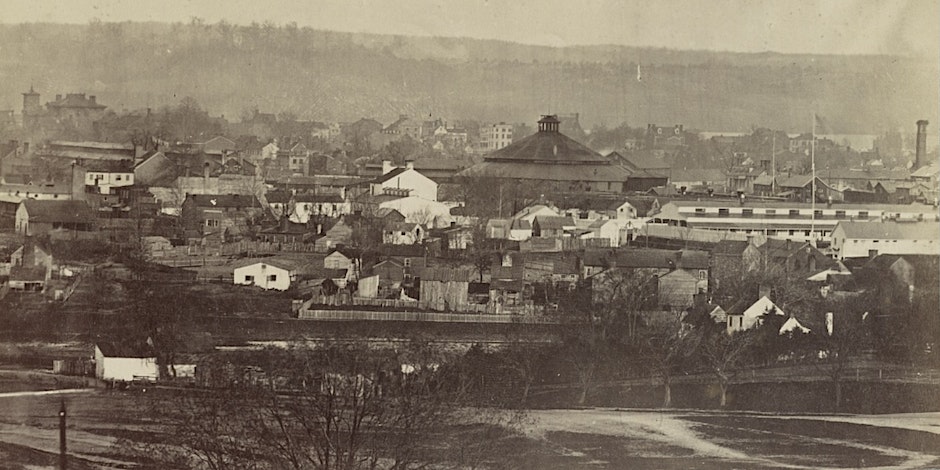
Most historic tours around Alexandria take visitors to historic buildings, but a unique set of tours next month offers insight into the buildings that aren’t there.
The Lost Buildings of Alexandria tour examines the historic buildings that, for one reason or another, have been lost to time.
“The City of Alexandria has seen older buildings and spaces being restored, preserved, and reused in different ways,” a release said. “However, there were many buildings that were not preserved and have been lost to time. Through this tour, explore the streets of Alexandria with stops at locations where historic buildings once stood.”
The tour is a joint project from the Lee-Fendall House and Carlyle Historic Park. Tours start at the Lee-Fendall House Museum (614 Oronoco Street) at 10 a.m. every Saturday in September.
“The tour includes walking over many city blocks, so please dress appropriately for the terrain and weather,” the release said. “Tours are limited to 10 people. Tickets are $25 per person.”
Tickets are available online.

